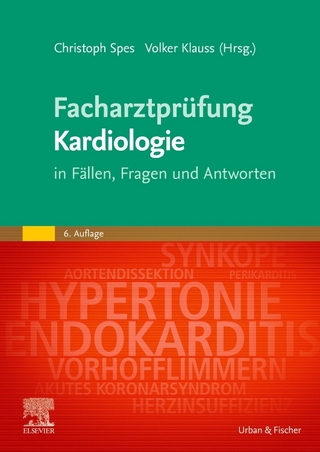
Frontiers in Cardiovascular Health
Springer-Verlag New York Inc.
978-1-4020-7451-6 (ISBN)
The Frontiers in Cardiovascular Health varies between and within nations, depend ing upon the level at which the battle is fought for better cardiovascular health. According to the 1997 World Health Report, 15 million deaths (i. e. 30% of the total number of deaths) were attributable to cardiovascular diseases and this number is on the rise. The projection for the year 2020 is quite alarming with an expected cardiovascular mortality reaching 50 million. Much of this burden is projected to occur in developing countries, more specifically in the most populous countries of the world, namely China and India. These countries are already burdened with infectious and parasitic diseases and are trying to eradicate such diseases. With increasing life expectancies people all over the world, especially in developing coun tries, are exposed to degenerative atherosclerosis resulting in increased cardiovascu lar mortality and morbidity. In developing countries, resources available for health care are very limited. For example many of the African countries spend less than $10 per person per year on his/her entire health care let alone cardiovascular health. The average health care budget for nearly two thirds of the global population is well below $100 per year, on a per capita basis. Therefore, in developing countries health promotion and primary prevention are the frontiers by necessity. Improving awareness and health education is not only a matter of choice but is an absolute necessity.
1. Inflammation and Cardiovascular Disease.- 2. The Role of Inflammation in Cardiac Function and Repair.- 3. Cardiac Repair Following Infarction.- 4. Protein and Phospholipids Composition of Human Myocardium in Children with Congenital Heart Disease.- 5. Human Atherosclerosis: New Participants?.- 6. Aging and Dietary Lipids Modulate Ca2+-Dependent Mitochondrial Function in the Post-Ischemic Heart.- 7. The Role of Nuclear Receptors in HDL Formation.- 8. Vascular Complications in Diabetes: Risk Factors and Pathogenic Correlates.- 9. Hypercholesterolemia and Cardiovascular Risk in Diabetic Patients.- 10. Altered Substrate Utilization in the Diabetic Heart: Role of Lipoprotein Lipase.- 11. Does Reperfusion Cause Any Injury to the Myocardium?.- 12. Fulminant Myocarditis—From Lethal Disease to Survival.- 13. Homocysteine/Coronary Atherosclerosis and Cardiac Transplantation: A Case Control Study.- 14. Drug Development Based on Functional Genomics of Overloaded Cardiomyocytes: CPT 1 vs. PPARalpha Effects of Etomoxir.- 15. Mutational Profiles and Molecular Etiologies of Hypertrophic Cardiomyopathy and Dilated Cardiomyopathy in Asian Populations.- 16. Flavanol-Rich Foods and Cardiovascular Health.- 17. Benefits of Dietary Fiber for Cardiovascular Disease and Diabetes.- 18. Nutrition and the Brain-Heart Connection.- 19. Vitamin D and Atherosclerosis: A Noteworthy Link.- 20. Congestive Heart Failure as Metabolic Disease.- 21. Conditioned Nutritional Requirements: Therapeutic Relevance to Heart Failure.- 22. Stress and Dietary Fat Influence Cell Membranes and Death Due to Ventricular Fibrillation and Heart Failure.- 23. Pharmacotherapeutics of Diabetic Cardiomyopathy.- 24. Atherosclerotic Regression—A Myth or Reality.- 25. Monolayers of Apolipoprotein AII at the Air/WaterInterface.- 26. Changing Partially Hydrogenated Fat for Palmitic Acid in the Diet Increases LDL-Cholesterol and Endogenous Cholesterol Synthesis in Normocholesterolemic Women.- 27. Cytoprotection of Cardiac Myocytes by Polyunsaturated Fatty Acids.- 28. The Effects of Taurine and Astragalus Membranaceus on Ion Currents and Their Expression in Cardiomyocytes After CVB3 Infection.- 29. CoQ10 in the Treatment of Heart and Vascular Disease.- 30. Global Burden of Cardiovascular Disease: Impending Pandemic in Developing Countries and Economies in Transition.- 31. Cardiovascular Risk Factors in Women.- 32. Cardiovascular Disease in Women in the Middle East.- 33. Hypertension and Diabetes Situation in the Eastern Mediterranean Region: With Special Reference to Iran.- 34. Coronary Artery Disease in Developing and Newly Industrialized Countries: A Scientific Statement of the International College of Cardiology.- 35. Social Inequalities, Nutrition and Health.- 36. The Potential Impact of Cardio Vision 2020 and Three Other Risk Factor Scenarios on Population Rates of Coronary Heart and Cardiovascular Disease: A Call to Action.- 37. Benefits of Exercise in Patients with Congestive Heart Failure.- 38. Cardiac Adaptations to Swim Exercise with Administration of a Cysteine Protease Inhibitor.- 39. Reversal of Coronary Atherosclerosis by Yoga Lifestyle Intervention.- 40. Prevention of Heart Failure—A Clinical Reality?.- 41. Diastolic Dysfunction, Redox Stress, Extracellular Matrix Remodeling and Congestive Heart Failure in Diabetes Mellitus.
| Erscheint lt. Verlag | 30.9.2003 |
|---|---|
| Reihe/Serie | Progress in Experimental Cardiology ; 9 |
| Zusatzinfo | XVII, 595 p. |
| Verlagsort | New York, NY |
| Sprache | englisch |
| Maße | 155 x 235 mm |
| Themenwelt | Medizinische Fachgebiete ► Innere Medizin ► Kardiologie / Angiologie |
| Studium ► Querschnittsbereiche ► Epidemiologie / Med. Biometrie | |
| ISBN-10 | 1-4020-7451-4 / 1402074514 |
| ISBN-13 | 978-1-4020-7451-6 / 9781402074516 |
| Zustand | Neuware |
| Haben Sie eine Frage zum Produkt? |
aus dem Bereich


